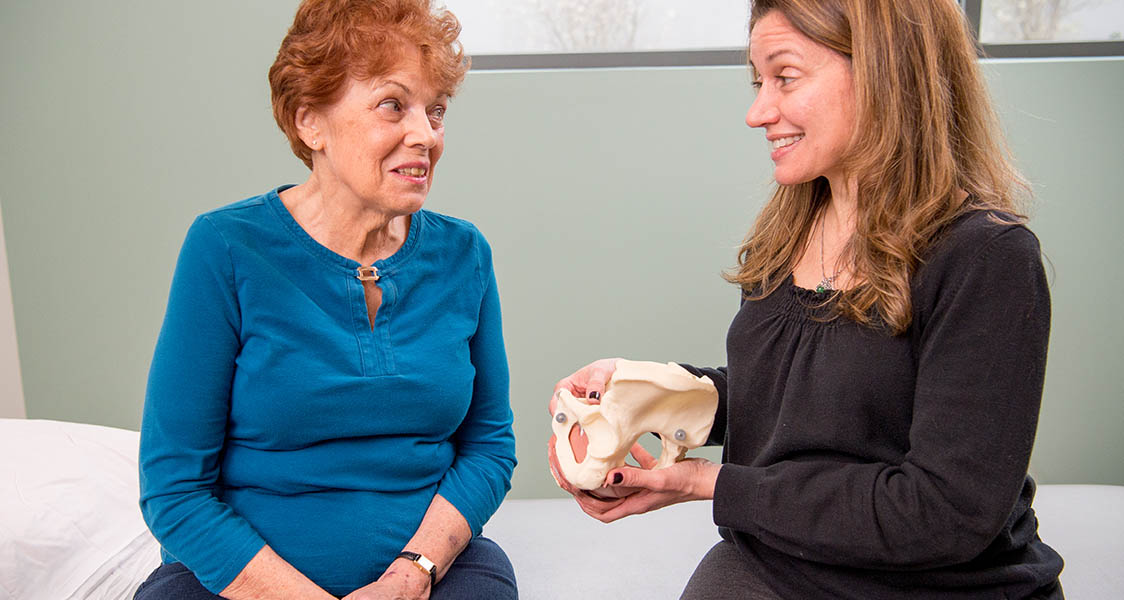Maybe you or someone you know has had physical therapy – perhaps for a shoulder injury, or a knee replacement, or even a stroke. If so, when you think of therapy, you probably think of doing repetitions and sets of certain exercises, lifting weights, pulling on colorful rubber bands, and being in a gym full of other patients. It’s no wonder that you would be more than a little confused when your doctor recommends physical therapy for your pelvic pain or bowel and bladder symptoms.
“What does lifting weights have to do with my bladder?” you might ask. Or, “How will I do pelvic exercises in a room full of people?” you might think.
Pelvic therapy is similar to other types of therapy, but also very different in some ways. It’s similar, because all therapy aims to address the neuromusculoskeletal system, which means that problems are occurring with your muscles, joints, connective tissue and nerves. This would be the same if the problems were in your shoulder, your pelvis, or because of a stroke. In many cases, symptoms in the bladder, bowel, or pelvis are occurring because of a problem with your muscles, joints, connective tissue, or nerves in that area. But pelvic therapy services are different because they are delivered in a one-on-one session in a private room. Strengthening exercises can often be a component of the therapy, but do not require gym equipment.
What Are The Symptoms Of Pelvic Floor Dysfunction?
- Frequent urination
- Strong urge to urinate (urgency)
- Unwanted loss of urine or stool (incontinence)
- Pain in the pelvis, hip, abdomen, thigh, low back, including with intercourse
- Constipation
- Pregnancy/post-pregnancy pain or incontinence
These symptoms are often caused by imbalances in muscle tone and strength of the pelvic floor and associated muscles and structures. Therefore, the movement, strength and muscle tone in your low back, hips, and abdomen, along with your posture and alignment, will be assessed.
The evaluation of the pelvic floor itself usually requires an internal exam. To do this, we will use manual palpation either vaginally or rectally, whichever is appropriate.
Manual palpation means that we will use one finger to do the assessment. This is different from a female gynecological exam, which uses instruments, such as a speculum. The purpose of the exam is to assess for muscle strength, excessive tightness, trigger points (small muscle “knots”), painful areas, and muscle coordination. Usually, the internal exam is not painful. If you are coming here because of a pain condition, it’s important during the exam to identify the specific muscles that are causing pain. This will help to create a proper plan of care.
Pelvic Floor Therapy Treatment
- Strengthening or stretching exercises of the trunk, legs, or pelvic muscles
- Relaxation exercises for shortened pelvic muscles
- Coordination exercises
- Education in self-management and prevention
- Biofeedback for either strengthening or relaxation of the pelvic muscles
- Modalities like heat, ice, or electrical stimulation.
Pelvic floor therapy treatment will vary depending on the specific problems identified. It is also recommended as a first-line treatment for many disorders of the pelvic region.
Click here to learn more about pelvic floor physical therapy or call 877-969-7342 to request an appointment online.

